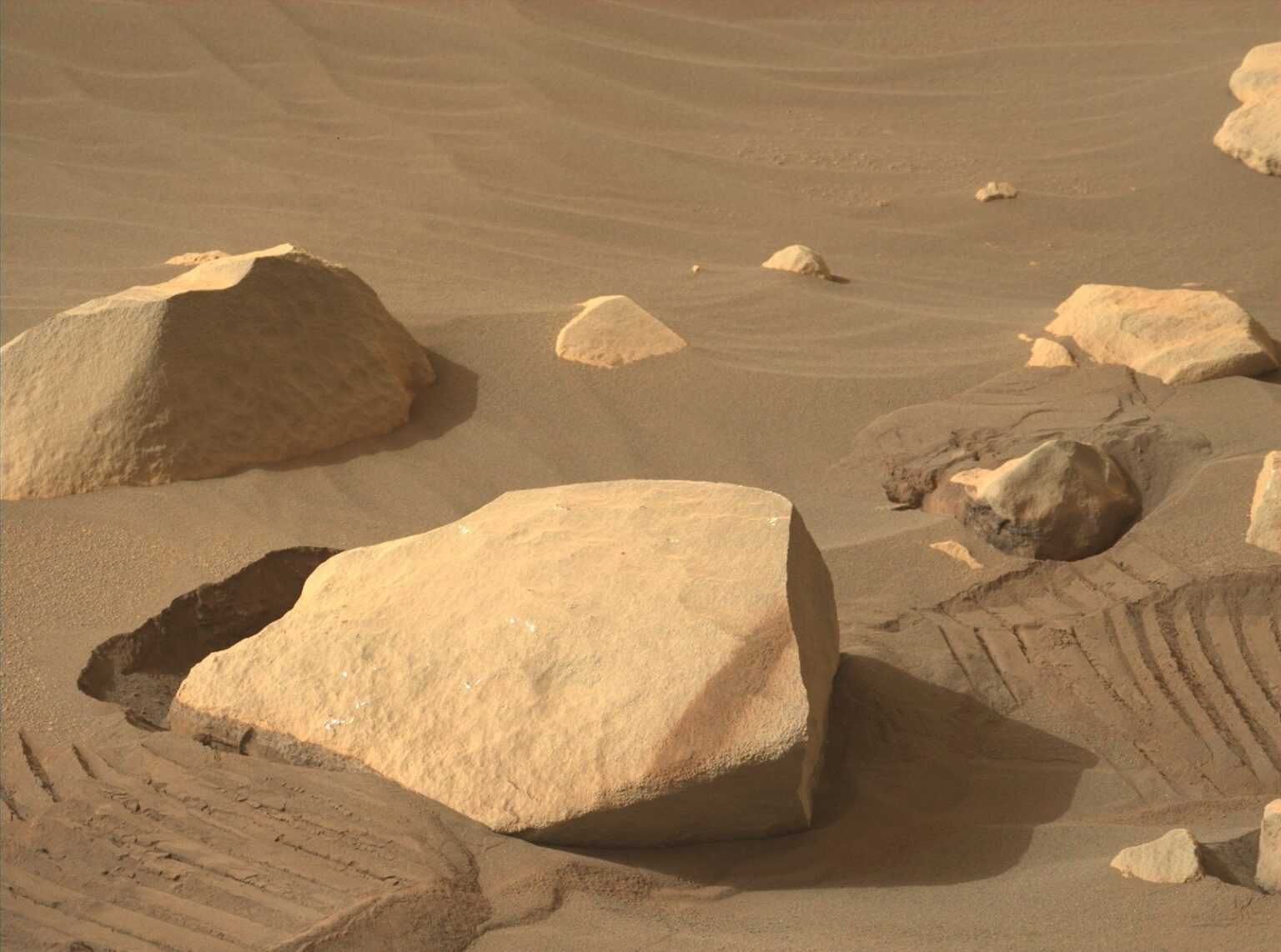The NASA Perseverance geologist rover, engaged in revealing the secrets of life on Mars, has transmitted a desolate but charming photograph from the surface of the planet. The picture shows dusty Martian rocks scattered across the barren land. The traces of the rover next to the stone loomed in the likeness of a unique installation of symbolic art. This attracted the attention of both the space agency and the public.

“Making some accidental zen art as I drive. Mars may be desolate, but it has a certain charm. ,” Perseverance wrote on Twitter.
Masterpieces captured with the Mastcam-Z camera
According to the rover mission team, the submitted photo was selected based on the results of a public vote and recognized as the “Image of the Week” of the Perseverance mission on Mars. The team reported that the picture was taken using the Mastcam-Z camera on board Perseverance.
Making some accidental zen art as I drive. Mars may be desolate, but it has a certain charm.
More of your favorite images: https://t.co/jQbq9rXW53 pic.twitter.com/nUmBAlF1iq
— NASA’s Perseverance Mars Rover (@NASAPersevere) May 3, 2022
There are five cameras on board the rover, each of which performs unique and important operations. Mastcam-Z was developed for shooting color videos and three-dimensional stereo images using a powerful zoom lens. Like the Curiosity rover, which also carries Mastcam cameras, Perseverance consists of two duplicate camera systems located next to each other and pointing in the same direction. This orientation offers scientists a three-dimensional image similar to what human eyes see, but with much better resolution. They also have a zoom function that allows to observe targets at a considerable distance in detail. For example, they can be used to observe solar eclipses.
My long haul to the ancient river delta is almost done. Up ahead: layered rocks, laid down in water, sure to hold secrets of what their environment was once like. Could they even give hints about past life? Time will tell…
More in the latest team blog: https://t.co/OH4pflHxaI pic.twitter.com/Nq5x0x1TkC
— NASA’s Perseverance Mars Rover (@NASAPersevere) April 15, 2022
Where is Perseverance now?
In April, the rover’s operators reported that Perseverance is now in the region that has the highest chances of detecting signs of ancient Martian life. After descending into the Jezero crater in February 2021, the rover would explore a site that was once flooded with water and was the delta of a dried-up ancient river. And where there was water, microbial life could probably exist.
Perseverance’s next task will be to study layered rocks that may be submerged in water and also contain signs of life. According to NASA, life could have first originated on Mars about 4 billion years ago. Scientists believe that then the Red Planet was much more favorable for life, until some cataclysm turned it into a lifeless desert.
Follow us on Twitter to get the most interesting space news in time
https://twitter.com/ust_magazine

